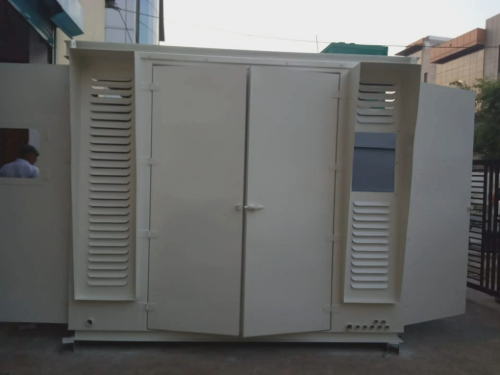

Guru Kripa Engineering is a leading Acoustic Enclosure for Compressor manufacturer in India. In industrial environments where compressors are integral to operations, the accompanying noise can often be disruptive and pose challenges to worker comfort and productivity. Acoustic enclosures tailored specifically for compressors offer a solution to mitigate noise levels while ensuring optimal performance. This article explores the benefits and considerations of implementing Acoustic Enclosures for Compressor in industrial.
Acoustic Enclosures for Compressor offer a practical solution to reduce noise levels and enhance workplace comfort and safety in industrial settings. By effectively mitigating noise emissions, these enclosures contribute to improved employee well-being, equipment protection, and regulatory compliance. With careful planning, design, and implementation, organizations can reap the benefits of acoustic enclosures while optimizing compressor performance and productivity.
Benefits of Acoustic Enclosures for Compressors:
Noise Reduction: Acoustic enclosures for compressors effectively reduce noise levels emitted during operation. By containing the sound within the enclosure and utilizing sound-absorbing materials, such as foam or fiberglass, noise levels can be significantly reduced, creating a quieter work environment.
Improved Workplace Comfort: Excessive noise in the workplace can lead to employee discomfort, stress, and reduced productivity. Acoustic enclosures help create a more comfortable working environment by minimizing noise disturbances, allowing workers to focus better on their tasks without being hindered by excessive noise levels.
Enhanced Safety: High levels of noise from compressors can pose a risk to workers’ hearing health over time. Acoustic enclosures mitigate this risk by reducing noise exposure, helping to prevent long-term hearing damage and ensuring compliance with occupational safety regulations.
Equipment Protection: Acoustic Enclosure not only benefit workers but also contribute to the longevity and performance of the compressor itself. By reducing external disturbances and vibrations, the enclosure helps protect sensitive compressor components from damage, extending equipment lifespan and minimizing maintenance costs.
Compliance with Regulations: Many industrial facilities are subject to noise regulations and standards imposed by regulatory authorities. Acoustic enclosures assist organizations in meeting these regulatory requirements by effectively reducing noise emissions from compressors to permissible levels.
